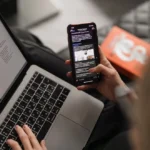I’ve always been fascinated by the power of words, especially when it comes to crafting compelling social media ad copy. With the advent of Natural Language Processing (NLP), my journey in ad creation took an exciting turn. Let me walk you through my experience and share how you can harness NLP to elevate your social media marketing game.
The Spark of Curiosity
It all started when I stumbled upon an article about NLP and its potential in marketing. Intrigued, I decided to dive deeper. I discovered that NLP, a subfield of artificial intelligence, focuses on the interaction between computers and human language. It can analyse vast amounts of text data, understand context, and even generate human-like text. The possibilities for social media ad copy were endless.
Setting Up the Tools
Before I could start experimenting, I needed the right tools. I opted for Python, a versatile programming language, and installed libraries like NLTK (Natural Language Toolkit) and spaCy. These libraries are robust and user-friendly, making them perfect for beginners and seasoned professionals alike.
Here’s a quick guide to get you started:
- Install Python: Download and install Python from the official website.
- Set Up a Virtual Environment: This helps in managing dependencies. Run
python -m venv myenvand activate it. - Install Libraries: Use pip to install NLTK and spaCy. Run
pip install nltk spacy.
With the environment ready, I was eager to see what NLP could do.
Analysing Existing Ad Copy
The first step was to analyse existing ad copy to understand what works and what doesn’t. I collected a dataset of successful social media ads and fed it into the NLP pipeline. Using NLTK, I performed sentiment analysis, keyword extraction, and part-of-speech tagging.
“`python
import nltk
from nltk.sentiment.vader import SentimentIntensityAnalyzer
Sample ad copy
ads = [“Buy one, get one free! Limited time offer.”, “Experience luxury like never before.”]
Sentiment Analysis
sia = SentimentIntensityAnalyzer()
for ad in ads:
print(sia.polarity_scores(ad))
“`
This simple script provided insights into the emotional tone and key elements of successful ads. I noticed that positive sentiment and urgency (e.g., “limited time offer”) were common traits.
Crafting New Ad Copy
Armed with this knowledge, I moved on to generating new ad copy. SpaCy’s text generation capabilities came in handy here. I trained a model on my dataset to create human-like ad copy. The process involved tokenisation, named entity recognition, and dependency parsing.
“`python
import spacy
nlp = spacy.load(“en_core_web_sm”)
Sample text generation
text = “Experience the best in class with our new product line.”
doc = nlp(text)
Extracting entities and dependencies
for token in doc:
print(f”{token.text} ({token.dep_}): {token.head.text}”)
“`
This script helped me understand the structure of my sentences, ensuring that the generated ad copy was coherent and engaging. I experimented with different combinations of words and phrases, focusing on maintaining a positive and urgent tone.
A/B Testing and Optimisation
Creating ad copy is just the beginning. To ensure effectiveness, I implemented A/B testing. I created multiple versions of the ad copy and tested them on different audience segments. By analysing engagement metrics (click-through rates, likes, shares), I identified the most effective variations.
I used tools like Google Analytics and Facebook Ads Manager for this purpose. These platforms provide detailed insights into ad performance, allowing me to optimise my copy continuously.
Real-World Application
One of my most successful campaigns was for a new skincare product. Using NLP, I crafted ad copy that highlighted the product’s benefits and evoked a sense of urgency. The ad read, “Transform your skin with our revolutionary formula. Limited stock available!”
I ran A/B tests with variations of this copy, tweaking keywords and phrases based on engagement data. The results were astounding – a significant increase in click-through rates and conversions.
The Journey Continues
NLP has revolutionised the way I approach social media ad copy. By leveraging its capabilities, I can analyse existing ads, generate compelling new copy, and optimise my campaigns with precision. The journey doesn’t end here; NLP is continuously evolving, and so are the possibilities.
Crafting compelling ad copy with NLP is a blend of art and science. It’s about understanding the nuances of human language and using technology to enhance creativity. Whether you’re a seasoned marketer or just starting, incorporating NLP into your toolkit can transform your social media campaigns.
Remember, the key is to experiment, analyse, and optimise. Happy ad crafting!











